MARKET OVERVIEW
Beyond healthcare technology, the global blood purification equipment market makes a life-changing act towards the sector through innovative aptitude. As the pertinent technology continues to advance alongside the improvement of patient care and treatment outcome, blood purification makes a center stage in health. Blood purification equipment, which includes various devices and systems that assist in removing toxins and other damaging substances from the blood, some considered waste products, therefore aiding in the restoration of physiological equilibrium toward the betterment of health itself.
The global blood purification equipment market is committed to addressing a variety of ailments and diseases. From chronic kidney disease to sepsis and more, these future technologies bring hope for patients and caregivers alike. The contemporary technologies will provide various filtration methods such as hemodialysis, hemofiltration, and plasmapheresis to enhance the removal of blood impurities with the aim of reinstating a balance in the body's internal environment.
Interestingly, blood purification equipment does hold a very bright future within this realm when it comes to better treatment outcomes and comfort for patients. Technology advancement has brought forth more compact, portable, and less complicated devices adaptable for use in diverse settings of healthcare. That is, if artificial intelligence and machine learning algorithms find their way into these equipment, they will completely alter treatment protocols to allow personalization and adaptability per individual patient requirements.
Apart from therapeutic procedures, global blood purification equipment market holds a crucial role in critical care medicine and emergency response. In such scenarios as drug overdose, poisoning, or extreme infection, efficient and rapid purification of blood could prove life-saving. By fast removal of toxins and metabolic balancing, these machines offer all patients who are most unlikely a lifeline, thereby increasing their chances of survival and recovery.
We are seeing a future for blood purification equipment with such a bright vista, with regard to treatment efficacy and comfort. The significance of preventive efforts and proactive health has become apparent, and there will be growing demand for such technologies. Further, research and development are also in progress to increase the indications for blood purification so that new directions are established for the management of various diseases and conditions.
The Global Blood Purification Equipment industry is cemented in the annals of modern-day medicine, changing lives of patients and medical practitioners across the globe-ever signaling possibilities as newer technologies evolve on the back of advancing knowledge about the disease mechanisms. Looking through blood purification, we have all the reasons to look forward to ushering a new direction for medical advancement and better patient outcome.
Global blood purification equipment market is estimated to reach $23,181.3 Million by 2032; growing at a CAGR of 5.93% from 2025 to 2032.
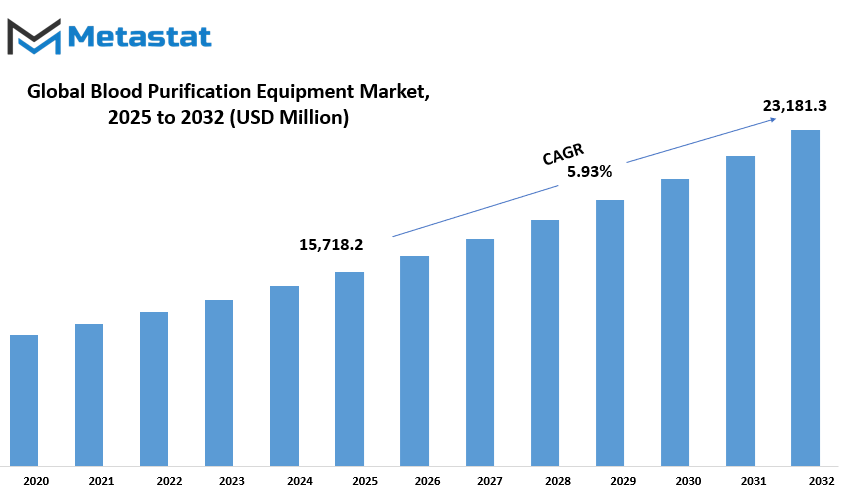
GROWTH FACTORS
The global blood purification equipment market is growing due to the increasing cases of chronic kidney diseases and end-stage renal disease all over the world. Progress in technology, also, has contributed a great deal to this market's development by enabling the production of more efficient and mobile blood purification organs. The use of such advanced technology, therefore, increases the efficiency of purification of blood with the equipment made available to the general population on a larger scale.
Nevertheless, some challenges exist that need resolution. The high costs are perhaps the greatest hurdle in this field, which have made blood purification equipment and treatment inaccessible to many, especially in the developing half of the globe. Some areas lack awareness of blood purification technologies, and this too holds the market back.
Nonetheless, the global blood purification equipment market has a bright future, with interesting opportunities arising in different regions. The expanding demand for this equipment in the emerging markets is driven by the growth in health infrastructure in the region and even greater awareness of the importance of kidney health. Given that an increase in healthcare expenditure by these regions is predicted, blood purification equipment market consumption is expected to grow at a greater scale.
In the years to come, greater emphasis will be laid on affordable yet advanced blood purification solutions. Manufacturers will strive for products that are cost-saving and still deliver in terms of quality and effectiveness. Moreover, innovations in telemedicine and remote monitoring technologies will improve mechanisms for the healthcare providers and companies to address the populations falling behind, hence accelerating market growth.
Furthermore, preventive health care promotion will emphasize increasing screening and early detection of kidney diseases, directly improving patient outcomes and causing an increased requirement for blood purification equipment in treatment.
The global blood purification equipment market is bound to grow immensely in the near future. High costs and limited accessibility being a challenge, however, technological innovations and increased healthcare investments in the emerging markets will further propel market growth and increase access to life-saving intervention for kidney disease patients globally.
MARKET SEGMENTATION
By Type
The global blood purification equipment market essentially incorporates the medical technology, which aims to present better healthcare outcomes for patients worldwide. The market has been continuously adapting according to advances in medical science and technology. One of the vital aspects characterizing the present market is the segmentation of blood purification equipment by type, which comprises Hemodialysis Device, Blood Filtration Device, Hemoperfusion Device, Plasma Exchange Device, and Immunosorbent Device.
With regards to the treatment of kidney failures, a condition afflicting millions of people across the globe, Hemodialysis Devices remain carved into a major domain in therapeutic intervention. These devices filter out toxins and excess fluids from the blood, thereby mimicking the function of the healthy kidneys. As the burden of chronic kidney disease increases, hemodialysis devices will increasingly find application, thereby becoming ever more innovative in terms of efficacy and comfort.
Blood Filtration Devices rid the blood of foreign materials, with the major contenders being toxins, metabolic wastes, etc. These devices are used not only in cases of kidney failure but also in sepsis and other critical illnesses in which blood purification becomes mandatory for sustaining life. With the advancement of medical knowledge, we should expect an evolution of blood filtration devices with a higher degree of filtration capacity and better patient outcome.
Hemoperfusion Devices operate by passing patient blood through adsorbent materials that preferentially remove toxins and other harmful substances. This technology is promising in cases of poisoning and overdose when fast removal of the offending toxin is essential for survival. In future, refinements in adsorbent materials and designs of hemoperfusion devices should lead to more efficient and obtainable treatment options.
Plasma Exchange Devices or plasmapheresis machines separate plasma from blood and replace it with a substitute solution. This process is an important treatment for autoimmune diseases, neurological disorders, and certain infections. The evolutionary process of plasma exchange mechanisms will expand with ongoing intervention research and provide targeted therapies against an ever-increasing range of medical maladies.
Immunosorbent Devices make use of immunosorbent columns to specifically eliminate antibodies or immune complexes from the blood. They are important in managing autoimmune disease, transplant rejection, and certain allergic reactions. Based on the growing understanding of immunology, the use of such devices in more and more areas in personalized medicine will give rise to targeted therapy fitting to individual immune profiles.
The global blood purification equipment market by type is rapidly evolving and an integral part of today's healthcare. With the progress in medical technology thriving, these machines will play an ever more vital role in enhancing patient outcomes and quality of life. The promise of future advancement in blood purification technology is assured, holding out hope for improved treatment options for patients around the globe through studies and innovation.
By Product
In fact, researches have shown that technology advancement were ongoing projects in healthcare. Blood purification equipment is another emerging area bringing much advancement in health care treatments. The global blood purification equipment market is looking forward to new ways of business and innovation in that very field.
Blood purification machines are delivered in many types and forms like portable or stationary, but their general function remains the same: to remove impurities from the blood so that they can be used to treat diseases like kidney failure and sepsis, as well as auto-immune disorders.
There is a bright future for portable blood purification equipment because of the ease and diversity that it facilitates. Outside the walls of the healthcare institution, the patient can finally be independent with treatment with the help of portable purifiers. Technological advancements, in fact, would continue further in producing much smaller and easier-to-handle portable purifiers.
Meanwhile, stationary blood purification devices continue to function vitally in hospitals or medical facilities. Such devices are used with more intensive treatments, usually along critical care settings. Advances in medical science allow stationary equipment to have features making them more effective and more sophisticated, thus attaining better results for patients.
By Application
Today, modern technology in medicine has completely transformed the treatment of diverse health conditions. One among them is the global blood purification equipment market, which has bright avenues in the healthcare sector. Marketable, available modalities for a number of applications are available for the to serve various medical needs.
Within this global blood purification equipment market, several categories have specific health issues. Acute Kidney Injury, Infectious Diseases, Sepsis, Renal Diseases, COVID-19, and Others are some applications of this necessity. Each of them targets a unique medical problem, extending the overall scope and applicability of blood purification technology.
Among them, Acute Kidney Injury (AKI) is a vast application. It is where kidney failure or injury develops abruptly within a span of hours or days. Acute kidney injury requires blood purification equipment as it assists in filtering toxins and waste products out of blood, thereby complementing the function of the kidney, enhancing recovery, and enabling the body to holistically detoxify.
One other field where blood purification equipment is a godsend is infection diseases. These infections surpass the body's defense system, flooding the immune system, and causing extremely serious complications. Blood purification technologies assist in the elimination of pathogens and toxins from the blood, thereby assisting the body in the fight against the infection and avoiding damage.
Blood purification equipment has also been successfully used in sepsis, a dreaded life-threatening reaction from the body to infection. By quickly cleaning the blood off the harmful substances, the technology helps to stabilize the patient and improve his survivability out of septic shock.
Blood purification machinery also caters to Renal Diseases. Most renal diseases are brought under the umbrella of chronic kidney disease, glomerulonephritis, among others. These devices manage symptoms and therefore improve the quality of life in patients.
The pandemic of COVID-19 has even further underscored blood purification technology's importance in healthcare. One of its immediate and severe respiratory and systemic complications-the cytokine storm and organ failure-will have their supportive treatment modality aided towards alleviating symptoms through this equipment.
Apart from these, the category of Other applications establishes the versatility of blood purification devices in addressing different medical needs besides those listed above. This equipment will continue evolving and adapt to changes in the health sector along new conditions and future emerging medical knowledge advancements.
The global blood purification equipment market encompasses a plethora of applications, each catering diverse aspects of healthcare. The scope of blood purification under acute causes like AKI and infectious diseases, for example, chronic manifestations like renal diseases, and even those futuristic threats such as COVID-19 will ensure this technology remains one of the finest pillars supporting modern medicine to the very patients in all the geographies worldwide.
By End User
The global blood purification equipment market is divided, by End Users, into Hospitals and Clinics, Dialysis Centers, and Others. It is highly pertinent to include these in order to realize the various settings of health care where blood purification equipment is used for different reasons, including diagnosing, treating, and managing various medical conditions.
Blood purification machines are found in hospitals and clinics in large proportion amongst all blood purification users. In clinics and hospitals, the equipment is being used for several reasons including treating patients suffering from acute or chronic kidney failure, to purify blood of toxins, and for treating certain autoimmune diseases. Hospitals, with their complete medical facilities and professional staff, are able to handle those more complicated cases of blood purification.
Dialysis centers would be other important environments for blood purification equipment. Dialysis centers are equipped to give dialysis treatment to patients in kidney failure. Equipment available for blood purification in those centers are used for hemodialysis or peritoneal dialysis procedures, caring so much for the basic health and well-being of the patients whose renal functions have really started to deteriorate.
A specialized center for patients on regular dialysis treatment ensures supervising that these patients receive routine and effective treatment. Besides dialysis centers and hospitals, this blood purification technology finds use in some other healthcare settings: outpatient surgical centers, long-term rehabilitation facilities, and home care situations. Here, the blood purification system would serve varied uses-from detoxifying a patient with an acute drug overdose or poisoning, managing fluid-electrolyte imbalance to assisting patients who are in the process of organ transplantation.
The user range indicates the usefulness and the importance blood purification machines command in modern medicine. Blood purification machines constitute the very heart of the treatment and management of many, various medical conditions in hospitals of different size scales, specialist dialysis centers, and even beyond. The presence of blood purification machines across so many health environments means timely and proper treatment to the patient, irrespective of the peculiar medical condition or the context under which he or she finds him- or herself.
The global blood purification equipment market, by end-user, is divided into Hospitals and Clinics, Dialysis Centers, and Others. These end-user segments are different healthcare environments where equipment for blood purification is applied for diagnosis, treatment, and care of a variety of medical conditions. The extensive use of these devices is proof of their value in contemporary medical practice and the central role they have in enhancing patient outcomes and quality of life.
|
Forecast Period |
2025-2032 |
|
Market Size in 2025 |
$15,718.2 million |
|
Market Size by 2032 |
$23,181.3 Million |
|
Growth Rate from 2024 to 2031 |
6.4% |
|
Base Year |
2024 |
|
Regions Covered |
North America, Europe, Asia-Pacific, South America, Middle East & Africa |
REGIONAL ANALYSIS
The global blood purification equipment market is globalized because it relies on a variety of factors, one of which is geographical distribution. This market is classified according to different regions: North America, Europe, Asia-Pacific, South America and Middle East & Africa.
North America represents the U.S., Canada and Mexico. Europe includes the UK, Germany, France, Italy and Rest of Europe. The major segments in Asia-Pacific are India, China, Japan, South Korea and Rest of Asia-Pacific. The segment of South America is Brazil, Argentina, Rest of South America. Lastly, the regions of Middle East and Africa comprise GCC Countries, Egypt, South Africa and Rest of Middle East and Africa.
All the regions present different opportunities and challenges for the blood purification equipment market. North America, because of being a developed region with advanced healthcare infrastructure, would have a higher demand for blood purification equipment. Similarly, Europe, having a major focus on technological advancements in healthcare, would give a favorable market scenario for this kind of equipment.
Emerging economies such as India and China's Asia-Pacific region will see high demands for blood purification equipment as an increase in healthcare awareness and disposable incomes. South America and parts of the Middle East & Africa will have some economic challenges but offer opportunities for growth in these markets as more money is spent on healthcare and increases in the prevalent chronic diseases.
But one must consider the importance of future technological transformation and the changing health regulations affecting the global blood purification equipment market. With new innovations in medical technology such as highly efficient yet portable blood purification devices, the market is set to thrive in all parts of the globe.
Along with this, some more agitated forces such as increasing investment on research and development activities, increasing collaborations between healthcare and technology firms, and increased acceptance of blood purification methods in many medical applications would continue giving push factors to market growth in the near future.
Although the global blood purification equipment market is diversified geographically, making available their individual opportunities and challenges in the region, the market is largely expected to grow steadily over the years in all regions due to technological advancements and changing trends in healthcare.
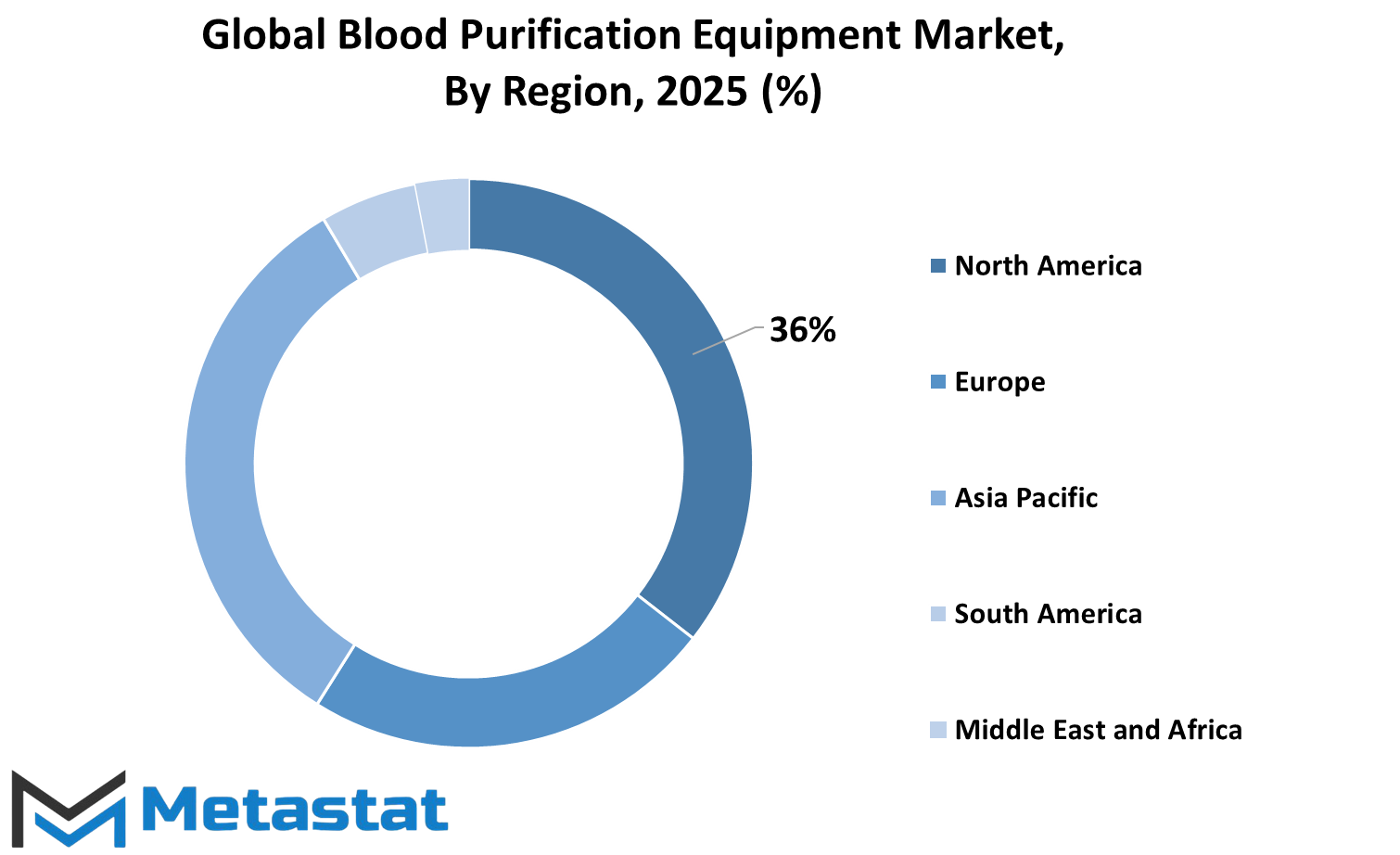
COMPETITIVE PLAYERS
The global blood purification equipment market is an important area of activity to keep the medical tech corner every growing with innovations and competing players. Important market actors include the globally renowned names, such as Aethlon Medical Inc., Asahi Kasei Medical Co. Ltd., B. Braun Melsungen A.G., and Baxter International Inc., all of which offer various insights and solutions to the field of blood purification equipment.
Aethlon Medical Inc., for instance, is recognized for its revolutionary endeavors in extracorporeal blood filtration systems that target the removal of harmful toxins and pathogens from the bloodstream. Their innovative way appears likely to disrupt the treatment of a range of medical conditions and hence open up more avenues for patient care and management.
In a similar vein, Asahi Kasei Medical Co. Ltd. is viewed as one of the leading companies in hemodialysis technique development and provision of high-quality products for effective and safe blood purification. By focusing on precision engineering and steady research work, Asahi Kasei Medical keeps advancing the innovative technological front in blood purification.
Braun Melsungen AG occupies an important position within the market, being a supplier of renal care covering hemodialysis machines and consumables. B. Braun Melsungen AG propositions affordable decades of value of experience towards the product with a care for quality that counts as its valid worth, providing solid and efficient solutions for patients with renal failure and related conditions.
Another noteworthy innovator in the global blood purification equipment market is Baxter International Inc., which, in addition to the production of products for renal therapy and blood purification, deals in inventiveness broadly. By employing patient-focused designs to mold technology development for blood purification as it responds to changing clinical needs and enhances patient outcomes, Baxter International Inc. seeks to stay ahead in the market.
Next to the discussed platforms, others that operate in the global blood purification equipment market include Cytosorbents Corporation, ExThera Medical Corporation, and Fresenius SE & Co. KGaA, who play a large role in facilitating innovation and competition in the industry. Together, these competitive players bring forth a creative ecosystem for the advancement of blood purification technologies into healthcare's next forefront.
Blood Purification Equipment Market Key Segments:
By Type
- Hemodialysis Device
- Blood Filtration Device
- Hemoperfusion Device
- Plasma Exchange Device
- Immunosorbent Device
By Product
- Portable
- Stationary
By Application
- Acute Kidney Injury
- Infectious Diseases
- Sepsis
- Renal Diseases
- COVID-19
- Others
By End User
- Hospitals and Clinics
- Dialysis Centers
- Others
Key Global Blood Purification Equipment Industry Players
- Aethlon Medical, Inc.
- Asahi Kasei Medical Co., Ltd.
- B. Braun Melsungen AG
- Bain Medical Equipment (Guangzhou) Co., Ltd.
- Baxter International Inc.
- Cytosorbents Corporation
- ExThera Medical Corporation
- Fresenius SE & Co. KGaA
- Infomed
- Jafron Biomedical Co., Ltd.
- Kaneka
- Nikkiso Co, Ltd
- SWS Medical Group
- Medtronic plc
- WEGO Holding Company Limited
WHAT REPORT PROVIDES
- Full in-depth analysis of the parent Industry
- Important changes in market and its dynamics
- Segmentation details of the market
- Former, on-going, and projected market analysis in terms of volume and value
- Assessment of niche industry developments
- Market share analysis
- Key strategies of major players
- Emerging segments and regional growth potential



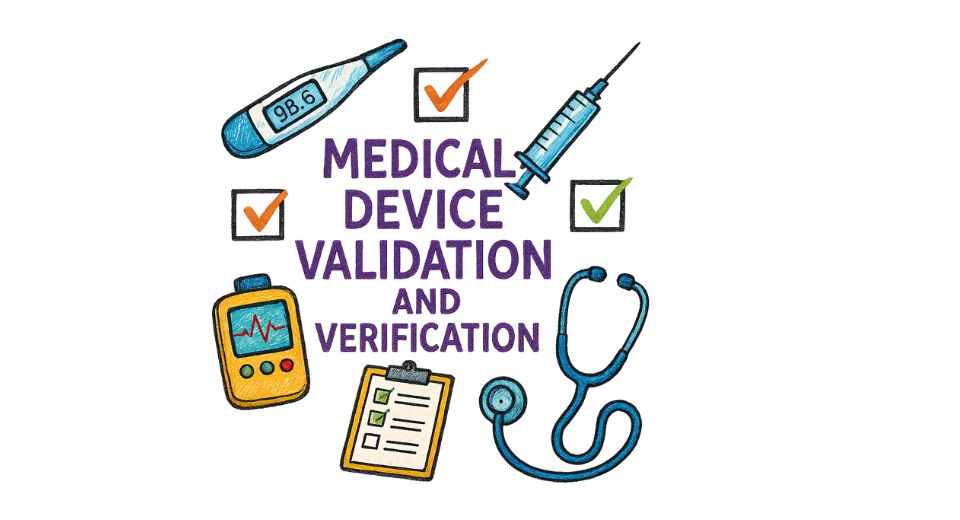
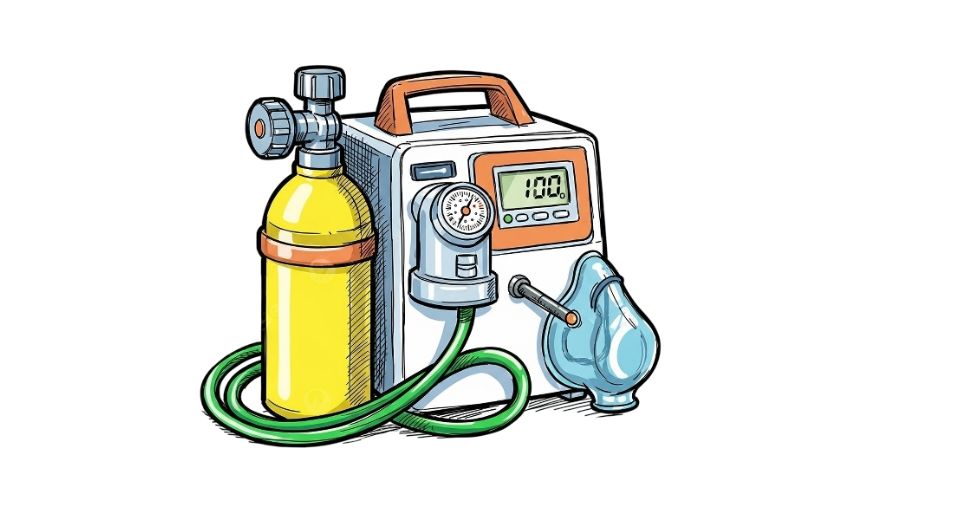

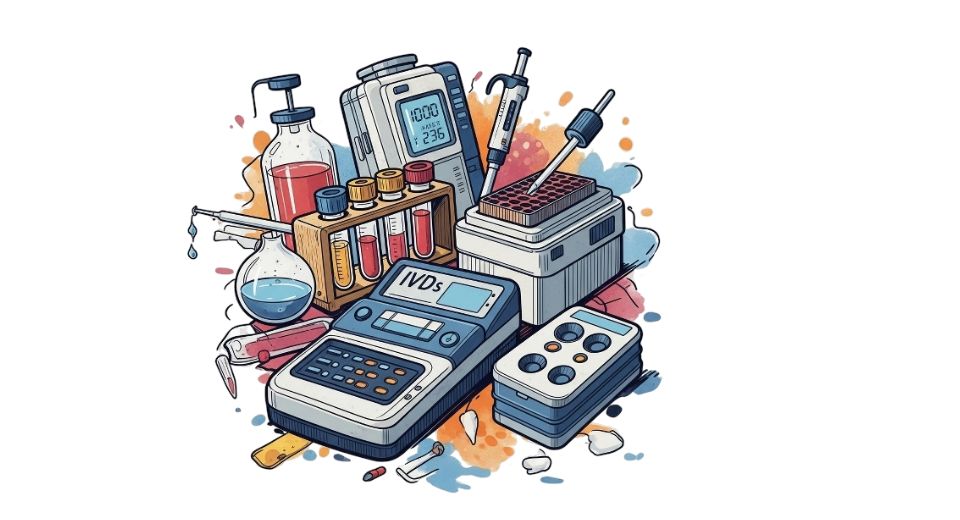

 US: +1 3023308252
US: +1 3023308252






